Abstract
Tardive dyskinesia, like several other choreiform disorders, is felt to be primarily related to dopaminergic activity within the striatum. Physostigmine has been demonstrated to improve the abnormal movements in patients with tardive dyskinesia while scopolamine tends to aggravate abnormal movements and in some cases elicits abnormal movement not previously observed. This evidence supports the hypothesis that anticholinergic therapy in patients prone to develop tardive dyskinesia may increase the incidence of this disorder by lowering the threshold for the appearance of these movements.
Full text
PDF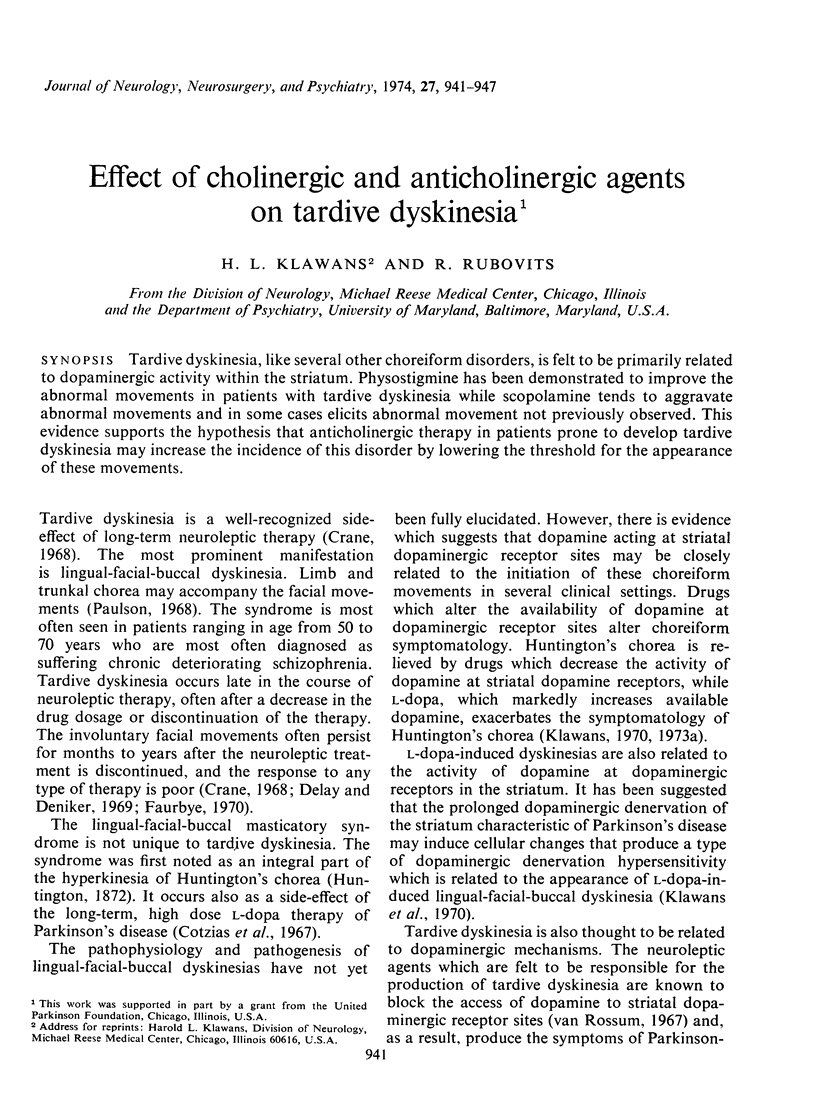
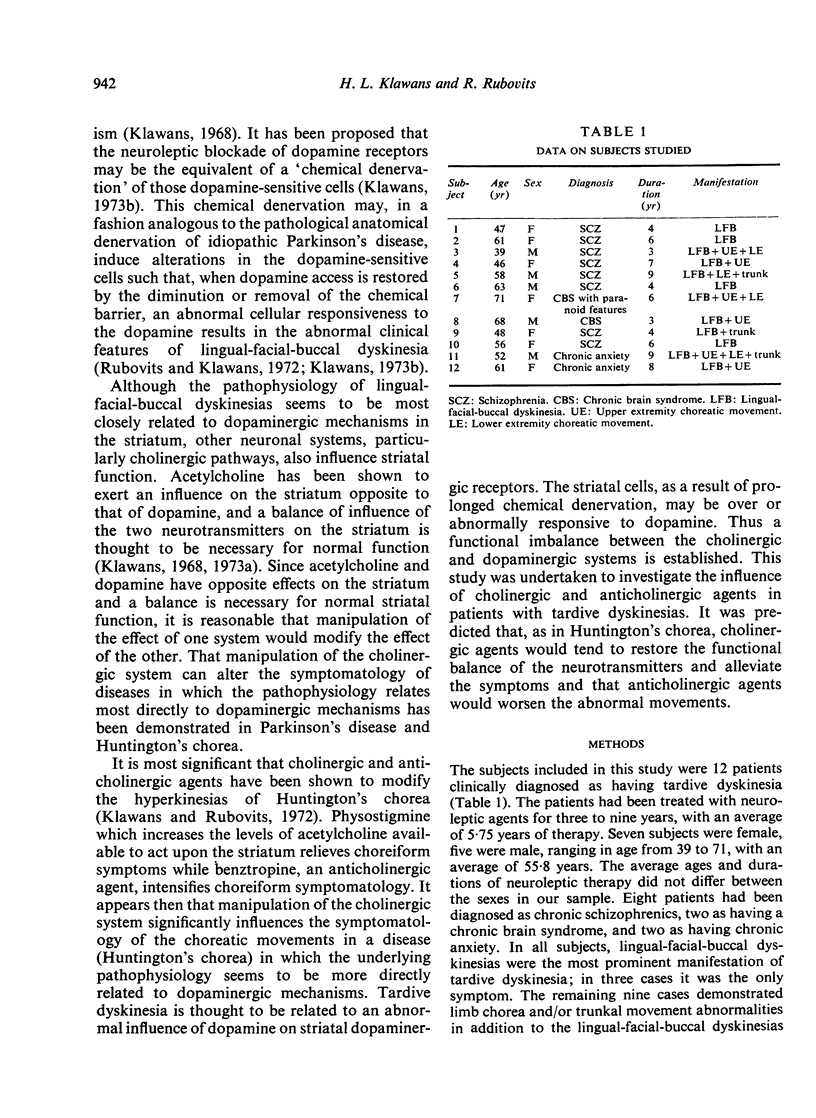
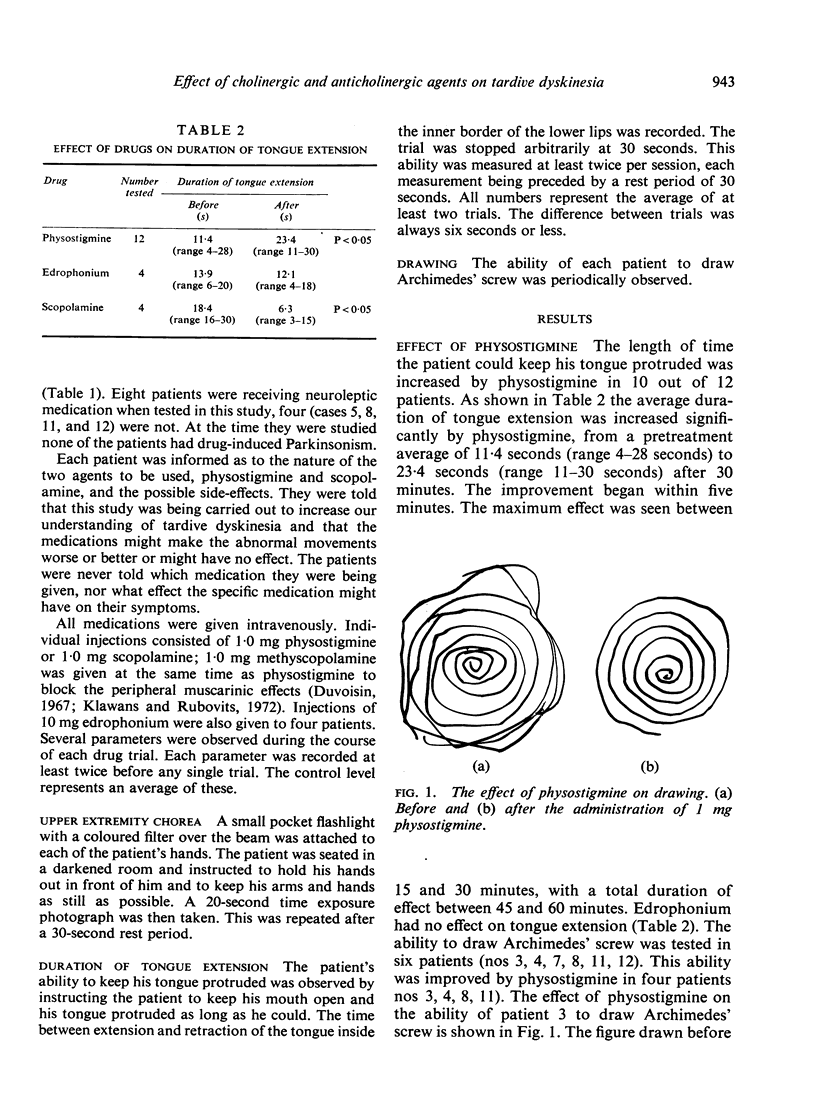
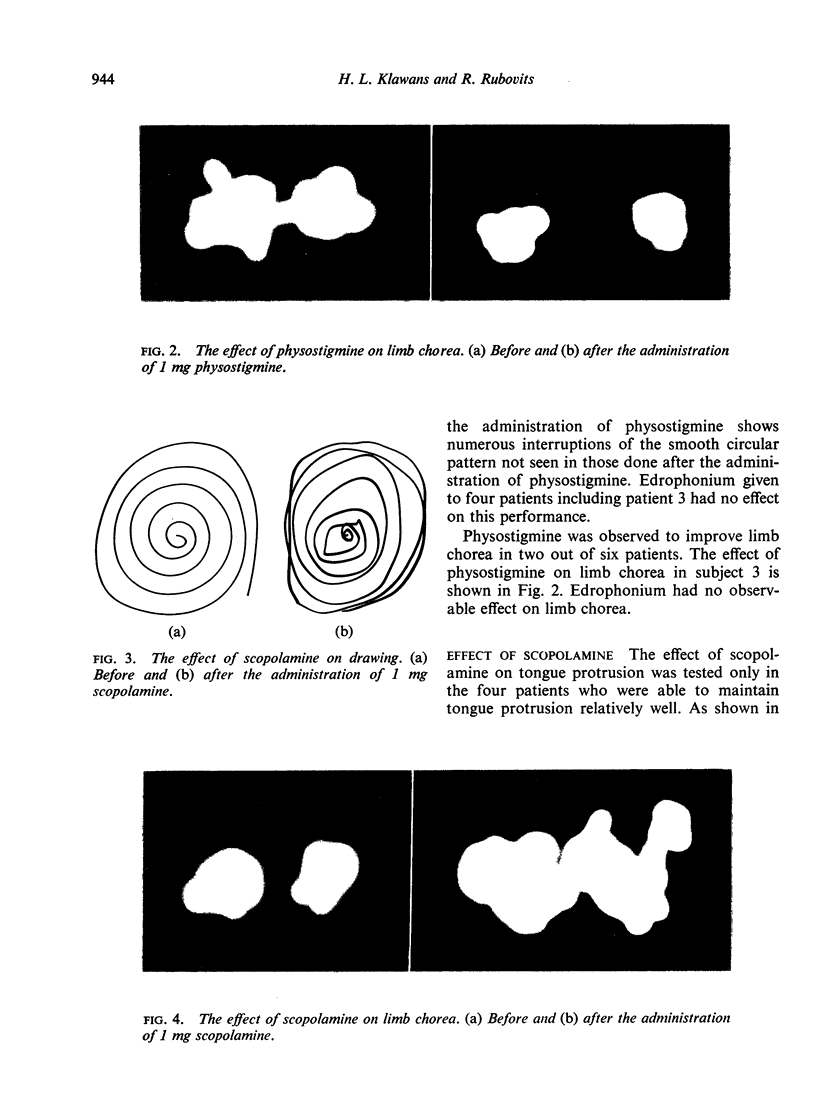
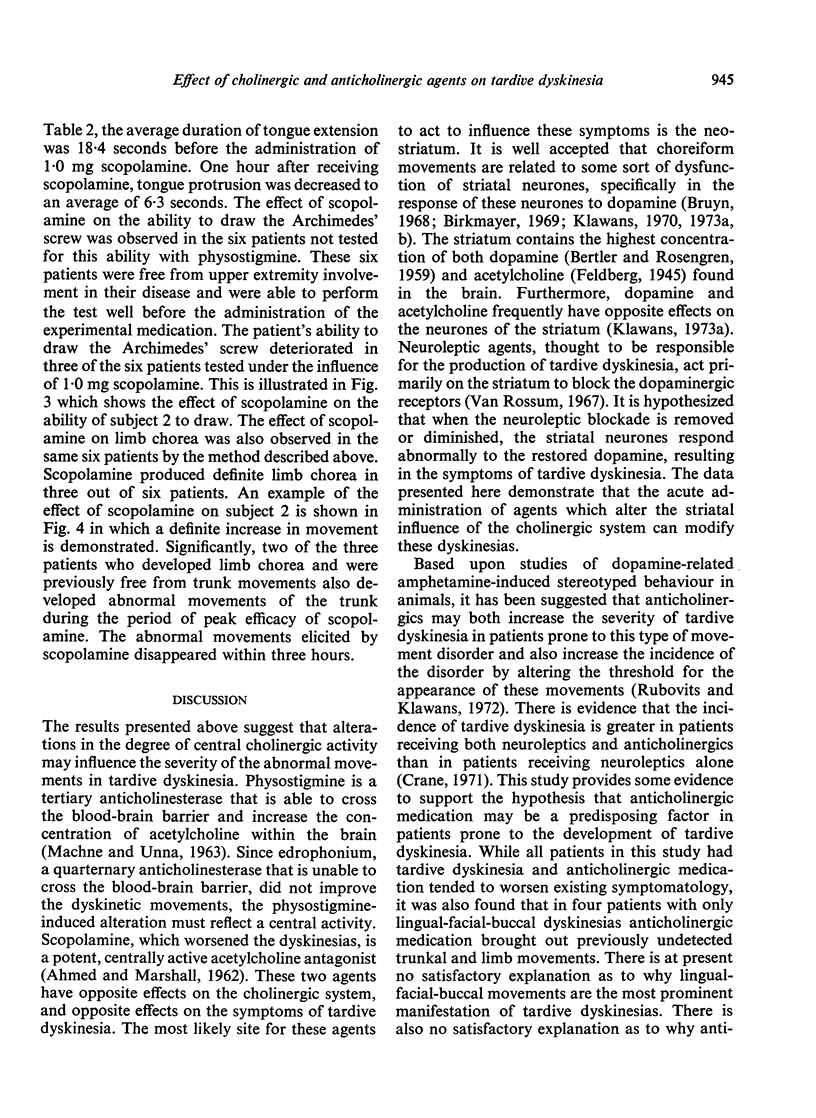
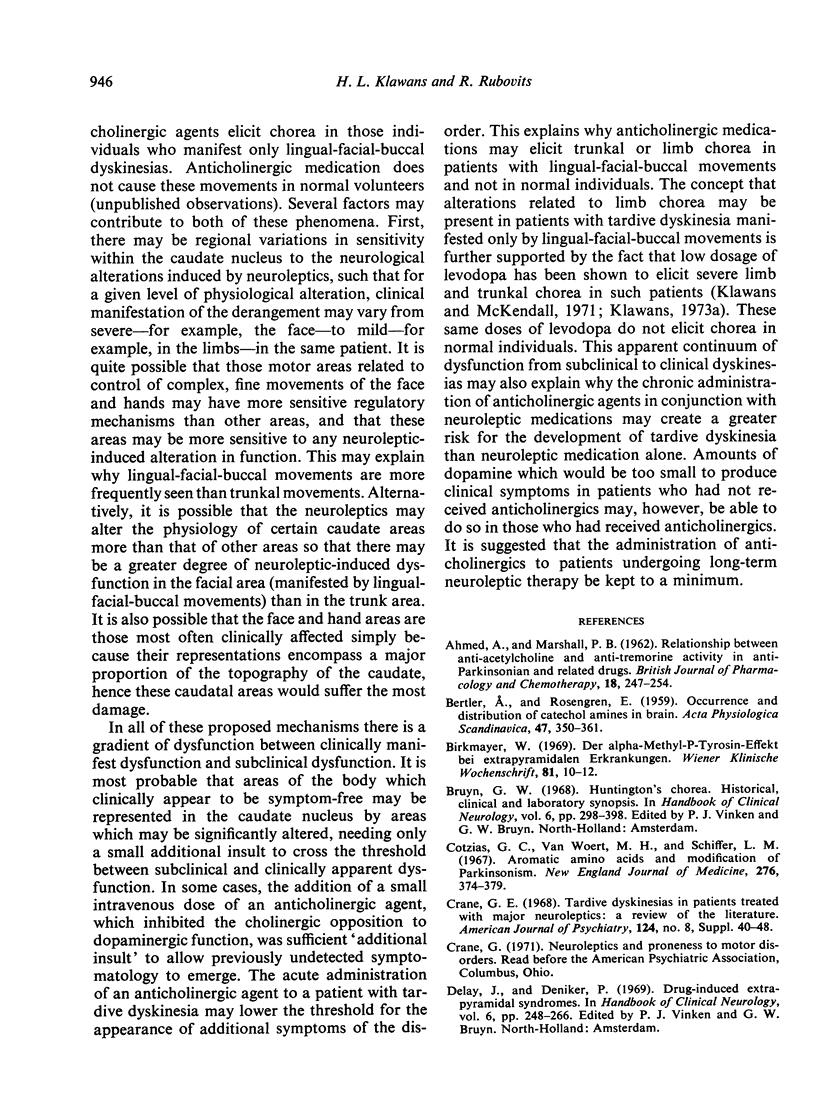
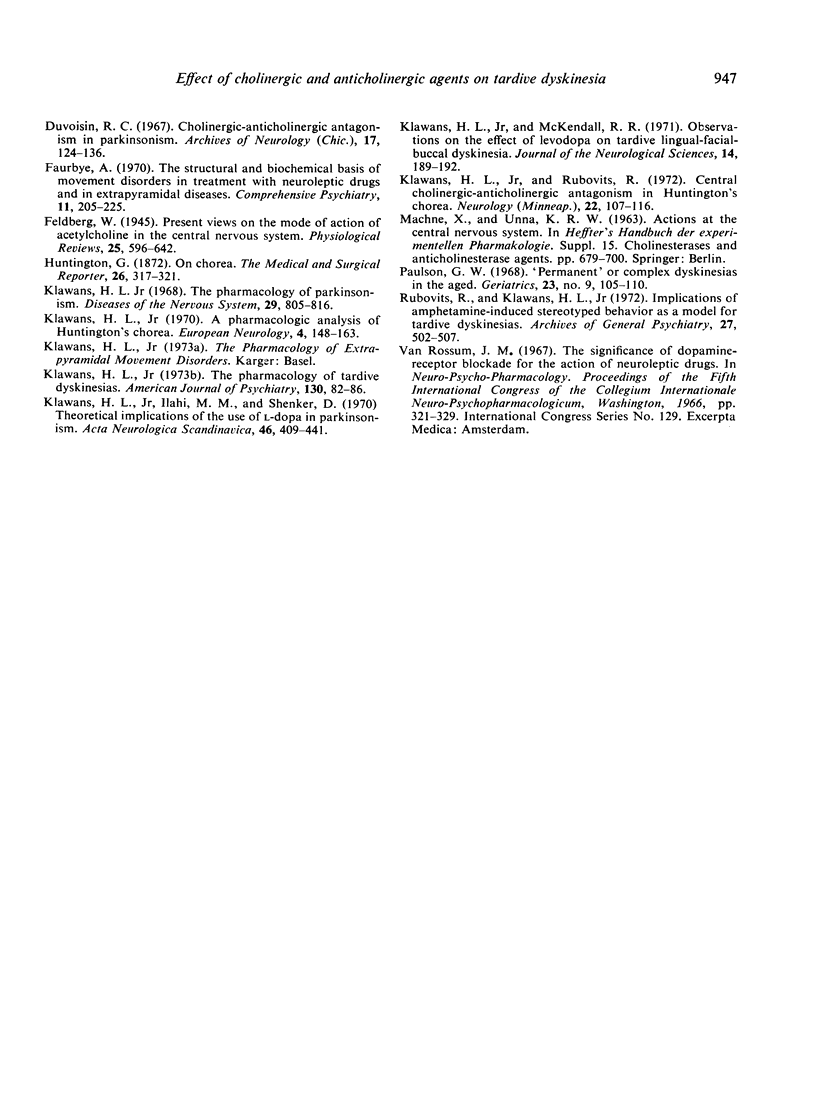
Images in this article
Selected References
These references are in PubMed. This may not be the complete list of references from this article.
- AHMED A., MARSHALL P. B. Relationship between anti-acetylcholine and anti-Tremorine activity in anti-parkinsonian and related drugs. Br J Pharmacol Chemother. 1962 Apr;18:247–254. doi: 10.1111/j.1476-5381.1962.tb01405.x. [DOI] [PMC free article] [PubMed] [Google Scholar]
- BERTLER A., ROSENGREN E. Occurrence and distribution of catechol amines in brain. Acta Physiol Scand. 1959 Dec 12;47:350–361. [PubMed] [Google Scholar]
- Birkmayer W. Der alpha-Methyl-P-Tyrosin-Effekt bei extrapyramidalen Erkrankungen. Wien Klin Wochenschr. 1969 Jan 3;81(1):10–12. [PubMed] [Google Scholar]
- Cotzias G. C., Van Woert M. H., Schiffer L. M. Aromatic amino acids and modification of parkinsonism. N Engl J Med. 1967 Feb 16;276(7):374–379. doi: 10.1056/NEJM196702162760703. [DOI] [PubMed] [Google Scholar]
- Duvoisin R. C. Cholinergic-anticholinergic antagonism in parkinsonism. Arch Neurol. 1967 Aug;17(2):124–136. doi: 10.1001/archneur.1967.00470260014002. [DOI] [PubMed] [Google Scholar]
- Faurbye A. The structural and biochemical basis of movement disorders in treatment with neuroleptic drugs and in extrapyramidal diseases. Compr Psychiatry. 1970 May;11(3):205–225. doi: 10.1016/0010-440x(70)90166-5. [DOI] [PubMed] [Google Scholar]
- Klawans H. L., Jr A pharmacologic analysis of Huntington's chorea. Eur Neurol. 1970;4(3):148–163. doi: 10.1159/000114017. [DOI] [PubMed] [Google Scholar]
- Klawans H. L., Jr, McKendall R. R. Observations on the effect of levodopa on tardive lingual-facial-buccal dyskinesia. J Neurol Sci. 1971 Oct;14(2):189–192. doi: 10.1016/0022-510x(71)90087-6. [DOI] [PubMed] [Google Scholar]
- Klawans H. L., Jr, Rubovits R. Central cholinergic-anticholinergic antagonism in Huntington's chorea. Neurology. 1972 Feb;22(2):107–116. doi: 10.1212/wnl.22.2.107. [DOI] [PubMed] [Google Scholar]
- Klawans H. L., Jr The pharmacology of parkinsonism (a review). Dis Nerv Syst. 1968 Dec;29(12):805–816. [PubMed] [Google Scholar]
- Klawans H. L., Jr The pharmacology of tardive dyskinesias. Am J Psychiatry. 1973 Jan;130(1):82–86. doi: 10.1176/ajp.130.1.82. [DOI] [PubMed] [Google Scholar]
- Klawans H., Jr, Ilahi M. M., Shenker D. Theoretical implications of the use of L-dopa in parkinsonism. A review. Acta Neurol Scand. 1970;46(4):409–441. doi: 10.1111/j.1600-0404.1970.tb05804.x. [DOI] [PubMed] [Google Scholar]
- Paulson G. W. "Permanent" or complex dyskinesias in the aged. Geriatrics. 1968 Sep;23(9):105–110. [PubMed] [Google Scholar]
- Rubovits R., Klawans H. L., Jr Implications of amphetamine-induced stereotyped behavior as a model for tardive dyskinesias. Arch Gen Psychiatry. 1972 Oct;27(4):502–507. doi: 10.1001/archpsyc.1972.01750280070012. [DOI] [PubMed] [Google Scholar]




